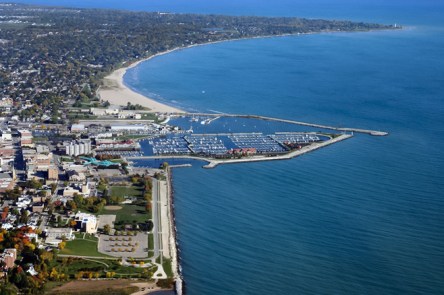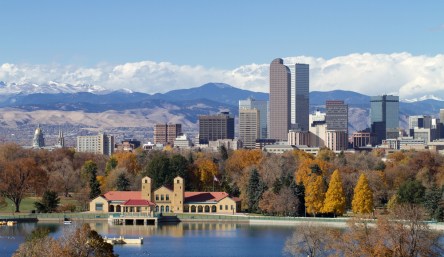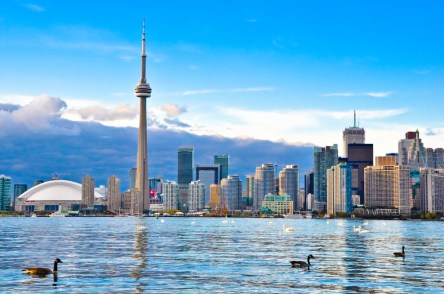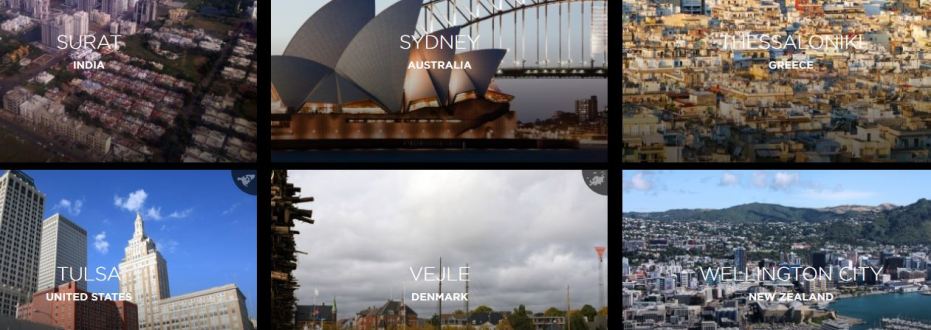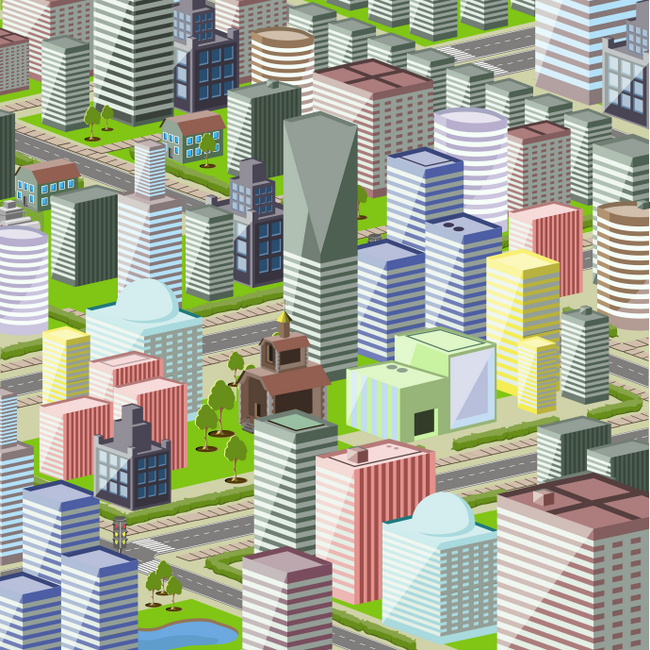Where are the most affordable places to live in the U.S.? Demographia’s 13th Annual Affordability Survey brought to light a list of affordable markets in the U.S. based on their median multiple, a number obtained by dividing the median house price by the median household income. The Median Multiple is widely used for evaluating urban markets and has been recommended by the World Bank and the United Nations. According to the survey, there are 82 affordable housing markets in the country. Racine, Wisc., is the most affordable of them this year, followed by Bay City, Mich. Decatur, Ill., Elmira, N.Y., and East Stroudsburg, Pa. America’s Kringle Capital is No. 1 With a population of less than 80,000, Racine is officially the most affordable city to live in based on median house price and median household income. If you decide to settle here, you’ll be 22 miles south of Milwaukee and 77 miles north of Chicago. Located at the mouth of the Root River, on the shore of Lake Michigan, the city is most famous for its Danish pastries. In fact, its nickname is derived from the kringle, an oval-shaped, buttery, flaky delicacy. But Racine is more than finger-licking desserts. The city boasts a zoo, a beautiful lakefront, a picturesque lighthouse, museums and historic architecture. Affordability Perks Bay City, Mich., ranks second in the top 5 most affordable cities. According to recent data published by mlive.com, the city is oversupplied, which keeps home prices and rent levels very low. City officials are struggling to eliminate blight, increase home values and attract new homebuyers. So if you’re thinking about moving to a riverfront property in a quiet town, now’s the time to do it. The third most affordable city in the U.S. this year is Decatur,...
Top 10 Best Places
Live Well, Work Happier
U.S. News & World Report recently analyzed 100 of the most populous metropolitan areas to identify the best places to live. Of the results, seven of the top ten U.S. cities are home to Yardi offices. To create the list, analysts compiled data from sources such as the Unites States Census Bureau, the Federal Bureau of Investigation, the Department of Labor and proprietary internal resources. Analysts then scored cities according to five key indexes: Job market, 20 percent Value, 25 percent Quality of Life, 30 percent Desirability, 15 percent Net Migration, 10 percent The weight of each index was determined by public survey. People throughout the U.S. voted to create the hierarchy of desirable features. The resulting list of 100 cities serves as a guide for some of the best-rounded metropolitans in the nation. These cities offer opportunity, quality, and value to residents. We are proud to announce that Yardi has offices in seven of the ten top places to live, indicated in bold. Denver, CO Austin, TX Fayetteville, AR Raleigh/ Durham, NC Colorado Springs, CO Boise, ID Seattle, WA Washington, D.C. San Francisco, CA San Jose, CA Yardi selected these amazing cities as our homes long before they made such top ten lists. And we’re not just saying that to gain cool points. Employee satisfaction and wellbeing are top priorities. We want employees to live well. We don’t simply pull resources and amenities from these top-ranking locales, either. We believe in giving back. Corporate philanthropy is a huge part of who we are and what we do. In addition to sponsoring nonprofits as an organization, we regularly roll up our sleeves to help out on an individual level. If you are looking for a place to call your professional and personal home, Yardi...
Fit in the City
American Fitness Index results
Ever wondered how fit your city is? The American College of Sport Medicine (ACSM) has. Since 2008 the ACSM takes a look at the health and fitness of the nations’ top 50 metropolitan areas, compiling a comprehensive ranking on community fitness to assess city strengths and identify areas in need of improvement. Dubbed the American Fitness Index (AFI), the report scores cities in a plethora of categories, such as walkability, residents’ proximity to public parks, chronic health problems, dietary preferences, recreational facilities and policy for school P.E. 2015’s recently released AFI report uncovered a number of encouraging results, with nine cities jumping up five spots in the ranks compared to last year. Some, such as Las Vegas, did so thanks to local action taken as a result of prior years’ results. An unsurprising result of the report is California’s love for healthy lifestyles. Of the six California MSAs on the AFI, four ranked in the top ten and none in the bottom fifteen. In fact the top five was dominated by California with Sacramento, San Francisco and San Diego ranking fifth, fourth and third. Minneapolis, the USA’s most bike-friendly city, was named runner-up to the country’s fittest city: Washington, DC. Washington-Arlington-Alexandria, DC –VA-MD-WV Topping the American Fitness Index, the Washington, DC area seems to be doing everything right. The city excels at the number of people walking, biking or using public transport to work, the number of farmers’ markets, park units, dog parks, swimming pools, rec centers and tennis courts and park-related expenditures per capita, with a high percentage of the population being within a 10-minute walk to a park. Washington’s fitness-consciousness is perfectly reflected in the Bozzuto Group-managed Flats 130 at Constitution Square and Flats at Atlas. Built in 2011 and 2013, the...
Toronto
North America’s Greenest City
Toronto shines as North America’s greenest city according to the Sustainable Cities Index, coming in at a respectable 12th place out of 50 cities. It is the only Canadian city to make the list. European and Asian cities continue to dominate the top rankings each year but Toronto is poised for greater gains. The Arcadis Sustainable Cities Index analyzes 20 metrics in areas such as environmental impact, quality of life, and economic performance. Toronto placed 9th in environmental impact, 15th in quality of life and 18th in profits. A looming population boom may serve as the perfect motivation to improve the country’s environmental impact rating. Within the next 15 years, Toronto’s population is estimated to grow by 25 percent. Infrastructure is developing to meet the needs of the growing population: Ontario earmarked $130 billion over the next decade for new transit, roads, bridges, and similar projects. As part of this plan, GO bus and train lines are expanding services to James North, Stoney Creek, Hamilton, Georgetown South, Kitchener, Unionville and Agincourt. The Scarborough subway will bring additional services to the north by the end of summer 2016. Those improvements are only the first frontier. Premiere Wynne presented a challenge earlier this year for all levels of government to increase investment from 3-3.5 percent to 5 per cent of the nation’s $2 trillion gross domestic product (GDP). The bump in funding will be dedicated to infrastructure renewal each year. But even with adequate infrastructure to meet the needs of residents and visitors, one of the greatest challenges will be supplying the population with sustainable energy. The city currently has about 60 renewable energy installations. (That quantity is small scale compared to other cities of its size, though it’s better than other cities in North America.) The new hydro-powered Copeland Transformer...
100 Resilient Cities
Achieve Global Recognition
Is your city resilient? The Rockefeller Foundation is in its second year of a global initiative to identify the world’s toughest cities – urban centers that have gone up against challenges of all sizes and refused to back down. In most cases, the impetus for resilience is ongoing. Athens, Greece, continues to recover from perilously high unemployment and resulting stress on its welfare system. Dakar, Senegal is growing so fast that public services and infrastructure cannot keep up. In the U.S., initially selected cities include Berkeley, Calif., Boulder, Colo., El Paso, Texas, Jacksonville, Fl., Los Angeles, Calif., and New Orleans, La., among others. A few might appear surprising choices. Boulder might seem like an affluent college town next door to the Rocky Mountains. But the city has faced natural challenges: drought, flooding, and wildfires. Berkeley resonates with most as a center for liberal education and free speech. But similarly, earthquake, heat wave and wildfires have been disruptive and caused problems. New Orleans, of course, continues to recover from Hurricane Katrina. El Paso battles both natural and social challenges. 32 cities were chosen in the first round of awards in December 2013. A second round of 35, chosen from 330 applicants, was announced last month. From the U.S., Dallas, Pittsburgh, Chicago, St. Louis, Boston, Tulsa and San Juan, Puerto Rico were added to the roster for 2014. A final round will be selected in 2015. Cities selected receive: Funding to hire a Chief Resilience Officer; Assistance in developing a resilience strategy; Access to a platform of innovative private and public sector tools to help design and implement that strategy; Membership in the 100 Resilient Cities Network. “We can’t predict the next disruption or catastrophe. But we can control how we prepare for and respond to these challenges. We help make our cities better at adapting to the shocks and stresses of our world and transforming them into opportunities for growth,” explains the non-profit’s website. See profiles of all 67 of the chosen cities online, or learn how to nominate your city in 2015, at...
Middle Market Growth
Positioned for Success
NAAHQ reports that apartment revenues in the nation’s top 100 largest metros currently exceed pre-recession levels by nearly 14 percent, with considerations for rising rents and the recovery in occupancy. While the usual top performers remain strong, suburban markets are showing a healthy recovery and bright future. Middle-markets are giving their high-end counterparts stiff competition. While individual urban locations can boast the highest new construction rates, many cities’ suburbs combine to exceed the growth of urban cores. Suburban middle-market communities, which are the vast majority of apartment inventory, and new luxury apartment communities present appealing options for a growing number of renters, particularly young singles and families. The strength of middle market performance is projected to continue well into 2015 since the factors contributing to their success are unlikely to change. Metropolitan zip codes are still desirable to many but high rents have driven a large pool of renters to the more moderate prices of the suburbs. Secondly, homeownership isn’t a viable option for most of these renters, whose incomes do not support the rising interest rates, utilities, and maintenance costs of a single-family property. Lastly, vacancy rates are low for middle-market and top-tier communities in the suburbs, resulting in less horizontal movement for renters. With occupancy at 95.8 percent, owners can receive top-dollar rents for available units with very little room for competitive pricing within comparable properties. But not all suburbs are flourishing equally. Renters who seek middle-market properties abandon the city limits with a few trade-offs in mind: Proximity to Universities Students and young singles provide a boost to many college towns, which are some of America’s fastest growing cities. Access to Public Transit Public transportation that connects suburbs to the major cities will reap the benefits of greater growth. Such conveniences...
Smart Cities
Getting smarter every day
Technology firms such as IBM, Microsoft, and Cisco have created software that transforms inanimate infrastructure into seemingly animated characters. Pipes identify their own leaks. Streets alert police of accidents and traffic jams. Buildings submit maintenance requests. The innovations offer endless possibilities. Fears of a high-tech dystopia, however, overshadow their efforts. Technology leaders must overcome public fears before their technologies can be adopted on a large scale. The Dawn of Smart Cities IBM has risen as a leader in smart city technology. The company hosts more than 2,500 smarter cities around the world. The goal of these experimental sites is to promote sustainable economic growth by providing the data leaders need to take proactive measures against mounting problems and make the most efficient use of resources. In an economic environment where revenues are tight in many countries, smarter cities could not have come at a better time. Many of the decisions made by leaders in smart cities are driven by collected data. Data sources include cameras, sensors and meters in public spaces as well as resident feedback–voluntary and involuntary–via apps and programs. The technology is already at work in creative ways. In New York, a collaboration between Center for an Urban Future and NYU’s School of Public Service allows the local hospital to decrease emergency room expenses. A “hotspotting” program identifies emergency room regulars, often locals suffering from chronic ailments and substance abuse. Based on the data compiled, outreach teams are dispatched to provide preventative assistance to at risk populations at homeless shelters and the streets. Emergency room costs are expected to decrease significantly. In Chicago, data for performance metrics, energy usage, crime, public health, transit, and more are accumulated and stored in an open-access website. To date, the city has 851 open data sets...

